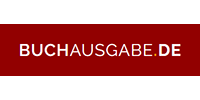Nonbanks: The new scapegoat for failed policies
Following the 2008-2009 global financial crisis, policymakers unintentionally created a regulatory gap that gave nonbanks – enterprises without a banking license that are allowed to offer some banking services – a considerable competitive advantage over banks. It is a problem that is now coming back to haunt them. Fifteen years ago, all eyes were on banks. Bad banking practices, allegedly resulting from the lack of regulation, were blamed for having caused a financial debacle of unseen proportions, whose consequences were felt for many years.
Over-supervision
The regulatory response to the crisis was equally unprecedented. Banks worldwide were subjected to a panoply of stringent rules and restrictions. Among others, they were required to substantially increase their capital and liquidity buffers, undergo stress tests and provide massive amounts of their business data to financial authorities – supposedly to ensure the banks would not fail.
“Healthy Banking System is the Goal, not Profitable Banks” was the headline of an open letter signed by 20 of the most prominent Western economists and published in the Financial Times in November 2010. The bigwig academics were alarmed by the direction things had taken: they argued that the proper way for the postcrisis reform was strengthening individual banks, preventing them from taking too much risk and, ultimately, reducing their systemic impact.
The European Union developed a particularly ambitious framework of banking regulation. It is organized around a “single supervisory mechanism” (SSM), which places the European Central Bank (ECB) at the top of a sophisticated and intrusive system of banking supervision. The intense regulatory efforts eventually paid off. The mini-banking crisis of spring 2023 may have been short-lived because banks are sounder today than they were a decade ago.
Regulatory favoritism
As it turns out, however, new risks to financial stability have recently built up in the background.
At least, that is asserted by the latest global financial stability reports published by key institutions such as the Bank of International Settlements (BIS), Financial Stability Board, International Monetary Fund and ECB. The presumed threats emanate from turmoil in “nonbank financial intermediation” (NBFI). In their overzealous regulation and monitoring of the traditional banking sector, authorities had so far paid little attention to this alternative financial sector, often pejoratively called “shadow banking.”
Compared to their conventional peers kept on a tight leash, nonbanks are loosely regulated and supervised.
Nonbank or market-based finance is a vast field comprising highly disparate actors such as insurance companies, pension funds, money market funds, hedge funds and a myriad of other, more or less high-risk, intermediaries. These entities hold no banking license but provide bank-like services, including lending. Compared to their conventional peers kept on a tight leash, nonbanks are loosely regulated and supervised.
While their bank rivals struggled to cope with exorbitant regulatory compliance costs, shadow banks could thrive unhindered. Their industry enjoyed spectacular growth over the past 15 years. The global investment fund sector alone more than doubled in size over this period. By the end of 2020, total assets held by NBFI entities accounted for nearly half of all financial assets worldwide ($226.6 trillion out of $468.7 trillion). Regulatory distortions ended up affecting the structure of the financial system.
Monetary expansion
Financial authorities contributed to the NBFI success story in another way. Ultra-accommodative monetary policy, conducted over a decade by the world’s leading central banks, has been a blessing for nonbank finance.
Central banks fueled massive asset bubbles by cutting interest rates to zero and buying up tens of trillions of dollars’ worth of government bonds and other assets. During the low-rates era, many shadow banks (real estate investment funds or equity funds, for example) greatly benefited from higher valuations of their investments.
Moreover, ECB executive board member Isabel Schnabel noted that funds searching for yields, such as bond mutual funds, took on more risk while rates were low. That allowed them to generate higher returns and attract more inflows. As rates hit bottom, money market funds tended to invest in the most risky but profitable asset classes. In other words, the ultra-loose monetary policy exacerbated risk-taking behavior in NBFI.
Many bank depositors, increasingly frustrated over being deprived of their interest income for years, resorted to nonbank finance to manage their savings more profitably. The Covid-19 pandemic accelerated that trend, since financial repression – policies by which governments channel funds from the private sector to themselves to borrow at extremely low interest rates – reached its peak.
Interestingly, more and more businesses and households have also turned to NBFI to satisfy their credit demand. That is the case even in the eurozone, where market participants traditionally relied on bank loans to fund their purchases and investments.
Stress propagation
Policymakers admit that NBFI is a vital source of diversity in the economy’s financing. They agree that the sector offers innovative investment opportunities and valuable alternative business funding sources. They even concede that nonbanks can act as global “shock absorbers” by providing credit to the economy when the traditional banking sector is in crisis.
However, regulators warn that nonbanks can also act as propagators of acute financial stress. There have been several recent episodes of high volatility in which the NBFI industry amplified and triggered market distress. These often coincided with incidents of global disruption. The outbreak of the pandemic in mid-March 2020 is a striking example. In a matter of days, investment funds were facing runs after masses of panicked investors wanted to sell off their bonds and raise cash. Buyers disappeared, and markets broke down.
Monetary policy transmission to the broader economy was undermined when it was needed most, policymakers complained.
Suddenly, all eyes were on nonbanks. Policymakers began to note some of the sector’s structural vulnerabilities, such as excessive leverage and low liquidity holdings. While interest rates were stuck in their low-for-long phase, asset managers had kept their fund cash holdings to a bare minimum. And yet, many would promise investors to convert even illiquid investments into cash whenever they asked.
Feedback loops
During the March 2020 turmoil, many investment funds were unable to meet sudden, large redemption requests from their clients. Facing record outflows, they had to liquidate as many assets as possible. Sometimes, they would sell more than needed to meet redemptions. Others (prime funds, for example) would shorten the maturity of their debt instruments rather than use their liquidity buffers to obtain cash.
According to a BIS report , such behavior led to rapid evaporation of liquidity in the financial system and, ultimately, a perilous deterioration of funding conditions in an already crisis-stricken economy. Monetary policy transmission to the broader economy was undermined when it was needed most, policymakers complained.
Moreover, the fire sales triggered self-reinforcing downward spirals in asset prices. The turmoil in the NBFI sector spilled over to the banking system because of their inherent interconnectedness. In no time, a new global financial crisis began to loom.
Central banks intervened rapidly with unprecedented liquidity support. By the end of March 2020, the ECB made available an envelope of 750 billion euros (upscaled to 1.8 trillion euros later that year) under a newly created “pandemic emergency purchase programme” (PEPP). Quantitative easing attained its paroxysm.
The intervention worked, and financial markets returned to normal. But what if this was the calm before the storm?
Sea change
Two years later, the financial world looks quite different, indeed.

Recent events at Silicon Valley Bank and Credit Suisse made clear that financial turbulence and the specter of global systemic risk are far from gone.
Today, slow economic growth, high inflation and rising interest rates strain financial institutions. Banks and nonbanks must cope with reduced lending activities, higher credit and liquidity risks and deteriorating profitability prospects.
Furthermore, as the ECB said in its May 2023 Financial Stability Review, “disorderly market adjustments” and “sharp asset price movements” put these institutions to the test. Recent market corrections have led to a notable decline in the value of many assets they hold. After monetary policy shifted from loose to tight, asset bubbles built up over the past decade are threatening to burst. Investors could be exposed to significant losses.
The reaction of the NBFI sector is once again noteworthy. Many investment funds have started unloading their most risky assets in response to rising yields and massive outflows.
Policymakers are particularly worried about nonbanks actively reducing their debt holdings. They fear that this could drastically tighten financial conditions for vulnerable households, firms, and – above all – sovereigns.
According to the ECB’s Financial Stability Review of November 2022, shadow banks are getting rid of lower-rated corporate and sovereign bonds. It is argued that these moves could be symptomatic of a “reversal in the credit risk-taking and search for yield” strategy observed during the low-rates years.
The trend is so strong that within less than a year, it has substantially shrunk the NBFI sector’s global size. The report noted that by mid-2022, the industry had experienced a contraction of almost 2.3 trillion euros in total assets.
‘Fallacy of composition’
It may appear rational that nonbanks are “decluttering” portfolios when market conditions turn unfavorable. However, regulators do not see it that way. For them, such risk-lowering strategies can amplify adverse market dynamics, making a bad situation worse.
Policymakers are particularly worried about nonbanks actively reducing their debt holdings. They fear that this could drastically tighten financial conditions for vulnerable households, firms, and – above all – sovereigns, many of whom had been enticed into debt by the cheap-credit policies of the past decade.
Previous episodes of heightened market volatility (like the one of March 2020) have shown that large-scale selling of government bonds can intensify the pressure on sovereign yields and spreads. That, in turn, may influence sovereign borrowing costs.
As a result, overly indebted governments could be pushed to the edge of the cliff. That would imply that the euro area is not immune to another bloc-wide sovereign debt crisis – triggered by NBFI companies trying to get back on a more secure path after years of financial folly.
Actions that seem prudent from an individual financial institution’s standpoint may threaten broader financial stability. For regulators, surprisingly, this is not an odd situation. On the contrary, regulators reject the assumption that if each part or member of a system strives to be safe and stable, the whole system must be safe and sound. Embracing such reasoning, they say, would be succumbing to a “fallacy of composition.”
But then, do they mean that, in the current situation, nonbanks should refrain from behaving reasonably?
Scenarios
A 2011 Harvard study, quoted by leading regulators, laid the cards on the table. It referred to “key market failures” that explain “why individual financial firms, acting in their own interests, deviate from what a social planner would have them do.”
“Social planners” usually see red when market actors spoil their plans and, in doing so, reveal the regulators’ failures.
That is what nonbanks are doing right now. By reacting so forcefully to shifts in monetary policy, they confront policymakers with some of their past and present follies. The recommended next policy steps can easily be guessed: nudge these misbehaving market players into dropping their “damaging” me-first attitude.
How can nonbanks’ potentially dangerous “selfishness” be broken? That is becoming an increasingly important theme for discussion in national and international policy circles. There are many calls for bringing shadow banks out of the shadows by subjecting them to the same kind of stringent regulatory framework as the one imposed on traditional banks.
However, once nonbank financial institutions have been transformed into fully supervised entities, new entrants will likely emerge to take advantage and stretch out in the shadow of regulation. Crypto-based decentralized finance (DeFi) companies are good candidates. Their fast-growing sector will be challenging to bring under control.
Ending regulatory discrimination between banks and nonbanks makes sense. But something is disquieting about policymakers’ unwavering desire to “fix the flaws” of the financial system by progressively putting all its actors under their yoke.
The original report was published here -> https://www.gisreportsonline.com/r/nonbanks/































